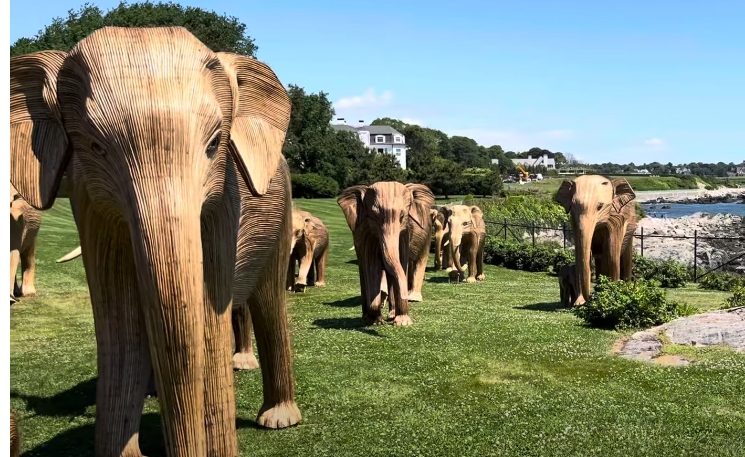This summer, an American migration that has not been seen for thousands of years started, a migration of elephants.
Yes, free-range elephants are crossing America for the first time since the last Ice Age, though they’re more art than animals.
“The Great Elephant Migration,” according to curator Dodie Kazanjian, is an international collaboration between indigenous artisans, modern artists and cultural centers around the nation, to raise millions of dollars through exhibitions to empower cultures and protect animals globally.
One John Carroll alumna, Kateri Fitzsimmons was lucky enough to see them at their last showing in New York City where she felt they were “Absolutely an experience worth seeing.” She also felt that it would be “so cool if they came to Cleveland” which is very much a possibility, as new locations are being chosen by popular demand.
The artisans, native to the Nilgiri Hills of Southern India, have witnessed the migrations of Asian Elephants in the hills for generations. Lately, these migrations have been getting smaller and smaller with the encroachment of urban populations and poachers.
To raise awareness for wilderness not just around their community, but around the world, these artisans connected with wildlife organizers and artists in America to create a call to action. Their hope is to have an impact in America through their art, so citizens can freely give to their cause of elephant preservation.
So there the project was born, with the idea that 100 Indian elephants, big and small would be made of an invasive weed, like bamboo, assembled piece by piece and shipped to the U.S. Once there, the smallest “baby” elephants would be displayed by donors for $8,000 and the largest “Tusker” elephants displayed for $22,000. Though steep, these prices would fall on local philanthropists to pay, leaving the giants largely free to view by the public.
Returning to India, these donations will go to a variety of charities and nonprofits, such as the “Coexistence Collective.” Made up of some of the 200+ indigenous artists who first began the project, to live a more sustainable life, they give back to the Nigrili Biosphere Preservation, their home and the protected home of the Asian Elephant in India.
As well, affiliate projects will see donations given to net-zero projects in the U.S. and India, as well as artisan events to sponsor global culture in New York City and Dubai.
Closer to home, the elephants will be traveling down America’s costal highways, as they migrate south for the winter, to stay in Miami until spring break brings them to Jackson Hole, WY, Houston, TX and more.
Interested Clevelanders can request an elephant appearance at gem@elephantfamilyusa.org which with enough support could visit the Cuyahoga Valley, a Cleveland Metropark or the Solstice Steps just to name a few.
Regardless, this project is the culmination of international ambitions to bring people, the environment and artists all together through something they love in this world—elephants.


